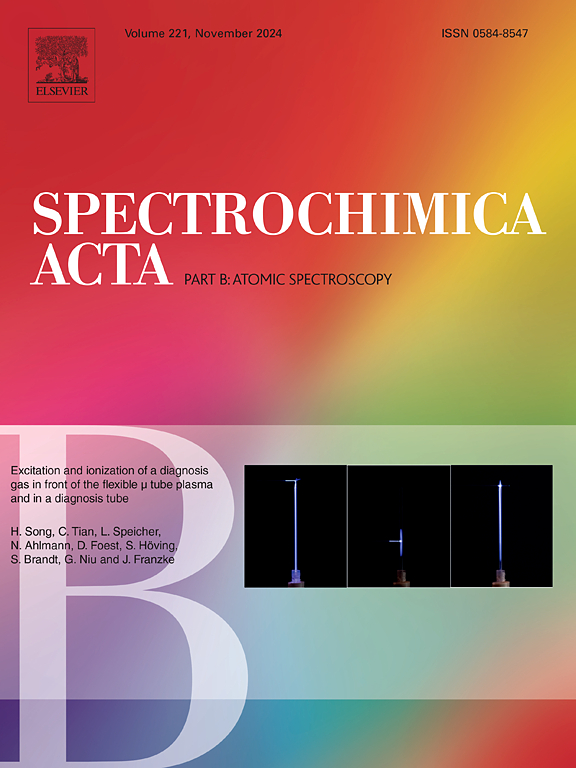Exploring the boundaries of double excitation in TXRF
IF 3.2
2区 化学
Q1 SPECTROSCOPY
引用次数: 0
Abstract
Double excitation is an established concept in Total-Reflection X-Ray Fluorescence Analysis (TXRF) and one of the key advantages of TXRF over common XRF methods. It is realized by setting the incident angle of the excitation beam to an angle below the critical angle of total reflection of the reflector material (e.g. Si wafers or quartz glass), external total reflection can take place. Consequently, the excitation beam can excite the sample prepared on the reflector twice: once by the incoming beam, and once by the reflected beam. Are there boundaries to this concept however? One obvious boundary is the realm of the X-Ray Standing Wave Field (XSW) that leads to oscillating excitation conditions in the nanometer range above the reflector surface, this may be identified as a “lower” boundary. Here however, the authors study an “upper” boundary for specimens in the micrometer range. This “upper” boundary was probed with binary mixtures of Ni and Ga with metal masses between 300 and 10,000 ng. These sample masses translate into dried sample residues with heights of about 5 to 100 μm and widths of up to several hundred μm. Using laboratory based angle-resolved (T)XRF two distinct deviations from the angle dependent double excitation were observed. A fundamental parameter model was created to give comprehensive insights into the why and wherefore of this “upper” boundary. This includes the approximation of the sample 3D shape, excitation geometry, reflectivity of the sample carrier and matrix effects. The model suggests that sample widths of several hundred micrometers induce a dampening of double excitation, i.e. only a relative signal intensity of approx. 1.75 is observed below the critical angle instead of twice the intensity (both relative to large angles above the critical angle). Furthermore, heights above several ten micrometers lead to an angle-dependency of the signal intensity with a maximum just below the critical angle, due to insufficient illumination of the sample by the reflected beam.

求助全文
约1分钟内获得全文
求助全文
来源期刊
CiteScore
6.10
自引率
12.10%
发文量
173
审稿时长
81 days
期刊介绍:
Spectrochimica Acta Part B: Atomic Spectroscopy, is intended for the rapid publication of both original work and reviews in the following fields:
Atomic Emission (AES), Atomic Absorption (AAS) and Atomic Fluorescence (AFS) spectroscopy;
Mass Spectrometry (MS) for inorganic analysis covering Spark Source (SS-MS), Inductively Coupled Plasma (ICP-MS), Glow Discharge (GD-MS), and Secondary Ion Mass Spectrometry (SIMS).
Laser induced atomic spectroscopy for inorganic analysis, including non-linear optical laser spectroscopy, covering Laser Enhanced Ionization (LEI), Laser Induced Fluorescence (LIF), Resonance Ionization Spectroscopy (RIS) and Resonance Ionization Mass Spectrometry (RIMS); Laser Induced Breakdown Spectroscopy (LIBS); Cavity Ringdown Spectroscopy (CRDS), Laser Ablation Inductively Coupled Plasma Atomic Emission Spectroscopy (LA-ICP-AES) and Laser Ablation Inductively Coupled Plasma Mass Spectrometry (LA-ICP-MS).
X-ray spectrometry, X-ray Optics and Microanalysis, including X-ray fluorescence spectrometry (XRF) and related techniques, in particular Total-reflection X-ray Fluorescence Spectrometry (TXRF), and Synchrotron Radiation-excited Total reflection XRF (SR-TXRF).
Manuscripts dealing with (i) fundamentals, (ii) methodology development, (iii)instrumentation, and (iv) applications, can be submitted for publication.

 求助内容:
求助内容: 应助结果提醒方式:
应助结果提醒方式:


